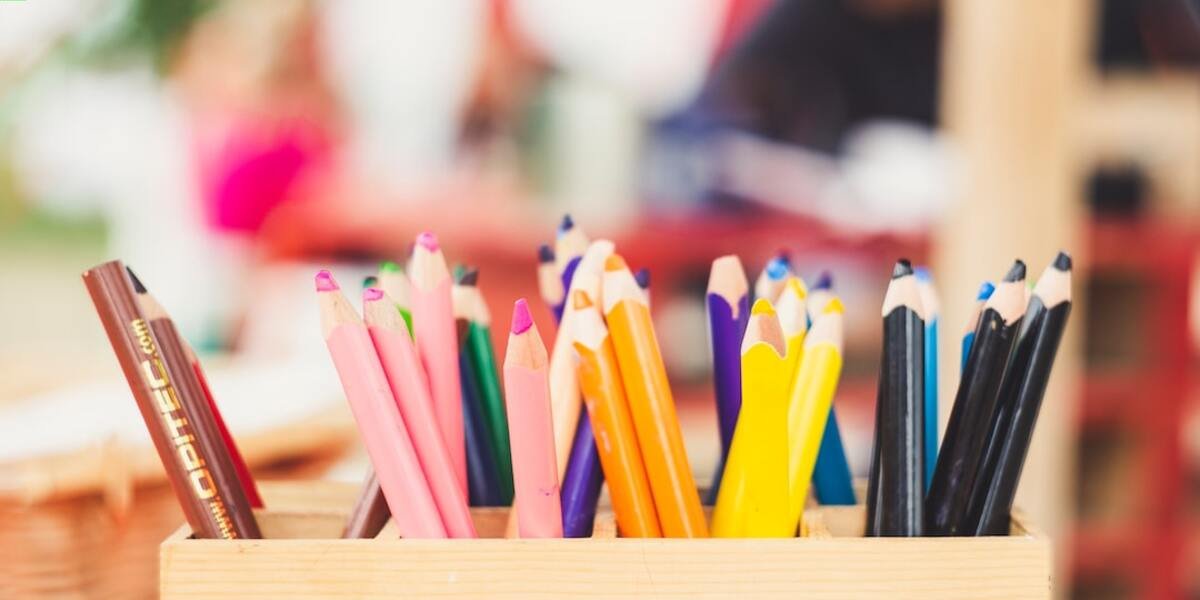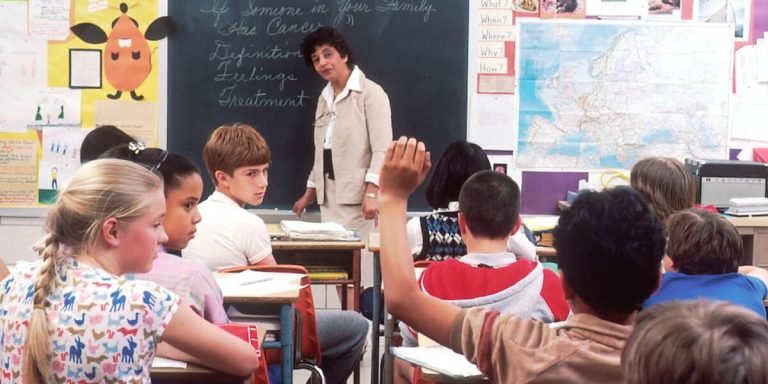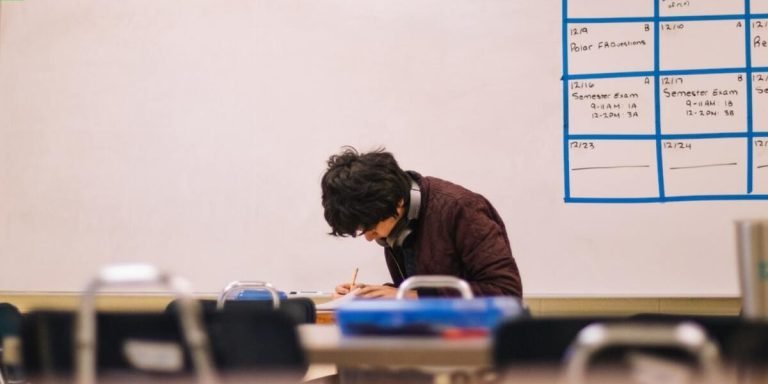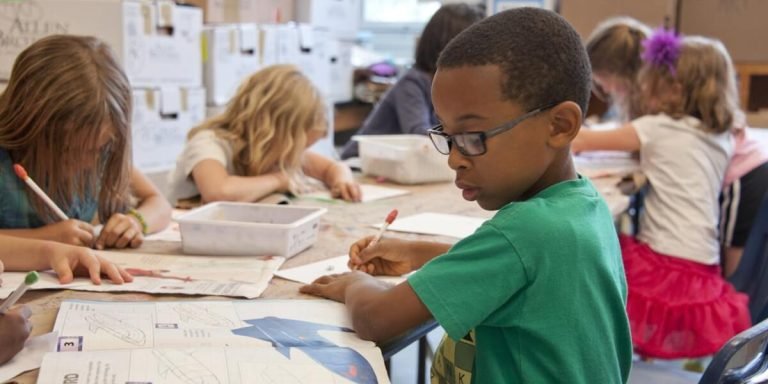ELA Teachers: Shaping the Future of Childhood Education
Elementary school education is a critical stage in the development of children. It’s where they get their first structured learning experiences, and it’s during elementary schooling that foundational academic concepts are introduced. One group of professionals who have an immense impact on this phase are ELA teachers.
Their role goes beyond teaching English Language Arts; they shape young minds, foster creativity and inspire lifelong learning.
ELA Teachers play a pivotal role in shaping childhood education by utilizing comprehensive strategies tailored to engage each child individually. They stimulate cognitive thinking skills through elements like reading comprehension exercises, creative writing prompts, perfecting grammar usage and broadening vocabulary knowledge among children – all vital for successful future educational endeavors.
Did you know?
Did you know? According to the National Council of Teachers of English, ELA teachers not only inspire children’s literacy skills but also shape their civic involvement and career aspirations by honing their communication abilities.
The Role of ELA Teachers in Promoting Literacy at the Elementary Level
ELA, standing for English Language Arts, teachers play a critical role in shaping foundational knowledge and nurturing the love of reading and writing among young learners. In today’s updated curriculum that thrives on fostering communication skills as much as literacy skills; ELA teachers at the elementary level are steering their efforts to promote comprehensive literacy among students.
The job of an ELA teacher goes beyond merely teaching alphabets or punctuation. With the focus ever-shifting towards holistic education, these educators find themselves wearing multiple hats including those of mentors, facilitators and soft skill trainers. They contribute significantly by integrating various aspects such as speaking fluently, listening attentively or understanding textual content into different elements associated with learning English language arts.
Methods applied by these professionals have evolved over time due to technological advancements coupled with innovative teaching techniques in 2023. Regardless if it is implementing interactive session plans involving games based learning tools like ‘Phonics Bingo’ or encouraging digital storytelling activities using online apps; all aim towards simplifying complex concepts thus making classroom instruction engaging against traditional chalk-talk methods while delivering educational outcomes effectively.
In conclusion, promoting literacy isn’t confined only within four walls rather it extends beyond classrooms where pupils apply learned insights practically. That being said ELA teachers occupy a key position executing this responsibility beautifully developing competent communicators out of innocent children paving way for future leaders who will carry forward society’s legacy successfully!
Understanding Reading and Writing Fundamentals
ELA Teachers, known as English Language Arts teachers, play a crucial role in promoting literacy at the elementary level. Their importance lies not just within teaching students how to read and write but also instilling a passion for language arts.
ELA teachers start with basic reading fundamentals. They ensure that each student has a firm grasp of phonetics – linking letters to sounds and forming words correctly. As 2023 progresses, ELA teachers are incorporating more digital resources into their lessons like interactive online learning games which help children learn while having fun.
In addition to this conventional approach, they guide young learners through different text forms including fiction genres such as fairy tales or non-fiction texts like newspapers articles or science journals honing their comprehension skills all along. Importantly too is exposing them early on to diverse authors and cultures making our kids aware global citizens.
Moving from writing individual sentences towards coherent whole paragraphs can often be quite challenging journey for little ones in understanding writing basics . This where ELA teachers come into action using creative techniques like story maps , sentence frames etc helping students organize their thoughts before putting pen on paper .
Given the significant changes due COVID pandemic when lot school time got transitioned onto virtual platform , focus instructional strategies made shift recognizing key aspects asynchronous learning platforms augment student engagement self-efficacy .
Cultivating a Love for Literature Among Young Learners
As educators and parents, it’s critical to understand the role of ELA teachers in promoting literacy at an early age. In elementary school education, one paramount goal is cultivating a love for literature among young learners. This lifelong passion can be ignited using various strategies that are both enjoyable and educational.
One method ELA teachers use involves storytelling sessions. These aren’t just your ordinary story times; they’re interactive experiences where students get to act out character roles, engage with props relating to the tale or even create their own alternative ending to a beloved classic. By making stories come alive this way, children not only improve their comprehension skills but also develop an eagerness for reading.
To further enhance this enthusiasm for books, ela teachers often incorporate diverse genres into curriculum plans each semester — ranging from fantasy novels like “Harry Potter” series by J.K.Rowling to autobiographies such as “My Life With The Chimpanzees” by Jane Goodall . Fostering exposure towards different literary forms enables youngsters understand myriad perspectives throughout history thereby broadening cognitive abilities besides inspiring unquenchable curiosity about world around them.
Strategies ELA Teachers Use to Enhance Language Skills in Children
Maximizing the learning experience in language arts for elementary school children involves strategic methods that ELA teachers have mastered over time. One of these strategies is creating an engaging environment where students are encouraged to express themselves freely, facilitating their understanding and utilization of the English language. By incorporating story-telling sessions, debates and drama plays into regular classroom routines, they don’t just develop reading skills but also nurture verbal expression and comprehension.
Another noteworthy approach adopted by skilled ELA teachers is making use of technology like mobile apps, online games or interactive websites which are great resources catering to modern learners’ tastes. In 2023’s digital era where youngsters are more tech-inclined than ever before, such tools provide a fun yet educational platform promoting vocabulary enhancement while enabling them to grasp complex grammar rules subtly.
Lastly, differentiation instruction has proven its worth as another effective strategy for enhancing young learners’ linguistic abilities under an ELA teacher’s guidance. Understanding that every child learns at his own pace with unique strengths and weaknesses involved allows customized lesson plans tailored per student’s requirements ensuring everyone gets close attention needed improving not only their confidence in tackling challenging concepts but overall performance too.
In conclusion- be it through expression-based activities leveraging cutting-edge technologies or individualistic teaching style – all focus on ultimately elevating kids’ proficiency level in English Language Arts guaranteeing a well-rounded academic foundation early-on from Elementary School Education itself paving way towards future success effortlessly!
Innovative Teaching Methods for Vocabulary Expansion
In the realm of elementary school education, ELA teachers employ a variety of innovative teaching methods to expand vocabulary in children. As we navigate through 2023, these strategies prove essential for developing well-rounded language skills.
One popular method is interactive word walls. Rather than static displays, modern classrooms harness active learning by encouraging students to add new words as they discover them during reading activities or classroom discussions. This visual reminder aids memory retention and fosters an environment conducive to vocabulary exploration.
Storytelling games form another strategy that elicits great enthusiasm among young learners while also boosting their lexicon. In this activity, each student adds a sentence to build upon the narrative using a selected pool of new terms – crafting fun tales while engaging with fresh vocabularies!
Contextual learning forms yet another vanguard approach undertaken by ELA teachers in today’s digital age-schools around the world are leveraging technology-integrated lessons such as virtual field trips or narrated animations which naturally expose kids not just to specific terminologies but conversational application thus fostering practical understanding along with theoretical knowledge.
Encouraging Critical Thinking Through Text Analysis
ELA teachers often use the technique of text analysis to foster critical thinking skills in children. This robust teaching strategy plays a crucial role in enhancing their language proficiency while developing an analytical mindset.
In classrooms today, there’s a shift towards encouraging independent interpretation and opinion formation on these texts rather than mere comprehension checks through redundant fill-in-the-blank exercises or true-false statements.
To further facilitate this process, discussions and debates form integral parts of classroom learning activities. Here, students get opportunities to express their viewpoints about characters’ motivations or plot developments thereby promoting engagement with literature at deeper levels.
Also gaining traction among ELA educators is the idea of student-led exploration into textual elements such as themes, symbols or narrative structures – empowering pupils for more nuanced appreciation and understanding beyond just surface reading.
Another popular method deployed by successful ELA Teachers revolves around drawing connections between text content and real-world applications; thus making learning relevant yet enjoyable for young minds!
Encouraging kids to take risks with language expression during written assignments can result in enriching outcomes too! It paves way for creativity via utilization of varied sentence formations & vocabulary usage leading toward overall academic growth – a facet extremely desirable from Elementary School Education perspectives!
Assessing Student Progress: How ELA Teachers Evaluate Learning Outcomes
Assessing student progress is a crucial role that every English Language Arts (ELA) teacher takes very seriously. An integral aspect of elementary school education, it provides the basis upon which teaching methods and strategies are evaluated and refined to meet unique learning needs. Given the intricacies involved in ensuring effective literacy development among kids today, ELA teachers rely on several techniques to analyze their students’ comprehension levels accurately.
One common method used by these educators revolves around formative assessments implemented across different periods throughout an academic year. These evaluations offer real-time insight into how well learners grasp key elements within ELA such as reading comprehension, grammar proficiency, vocabulary acquisition, spelling accuracy and composition prowess. The data accumulated from this process help ELA teachers pinpoint areas needing improvement while proactively addressing those with bespoke instructional approaches designed for each learner’s success.
However assessing doesn’t end there; another major part of tracking pupil progression involves summative assessments conducted at the conclusion of units or entire courses to validate curriculum delivery efficacy against predefined objectives within lesson plans – all aimed primarily at enhancing educational outcomes for children under their tutelage In 2023’s changing cultural dynamics affecting childhood scholastic milestones globally.
By routinely checking in on where pupils stand academically through transparent progress measurement metrics like regular quizzes or projects , then leveraging these results toward fine-tuning teaching methodologies accordingly – collectively ensures no child falls behind thus building solid foundations towards lifelong love affair with language arts amid our rapidly-evolving digital epoch.
Designing Effective Assessment Tools for Elementary Students
Elementary Language Arts (ELA) teachers are key contributors to nurturing knowledge and literacy among young learners. It’s essential that they evaluate learning outcomes consistently, using effective tools custom crafted for the elementary school environment.
Designing these powerful assessment methods is no small feat. ELA teachers must tailor them specifically around each student’s unique needs while keeping teaching goals in mind. The challenge lies not just in assessing what students know but also gauging how well they can apply this acquired knowledge.
In 2023, our modern educational landscape emphasizes a more holistic approach to assessments — going beyond multiple-choice tests or rote memorization drills.
An important part of ELA teacher’s role involves creating projects as an integrative measure of proficiency levels on different subjects like reading comprehension, writing capability or vocabulary understanding. Such could include book reports where children illustrate their grasp of plotlines by retelling stories through verbal presentations or written narratives enriched with personal analyses about characters’ motives & actions.
Another innovative method involves peer-assessments; enabling students to review and provide feedback on one another’s work adds novel dimensions both socially and academically within classrooms dynamics while fostering ‘active listening skills’.
Providing Constructive Feedback to Support Ongoing Development
Every year complex tasks fall on the shoulders of ELA teachers, with one major responsibility being to assess a student’s progress effectively and provide constructive feedback for ongoing development. In 2023, this process has been refined from traditional methods towards more holistic approaches that support continual growth.
Another essential aspect revolves around timing. Ideally, educational research suggests immediate or frequent feedback leads to better retention among elementary school kids compared to delayed responses.
Also noteworthy is maintaining balance between praise and critique while avoiding negative language altogether can foster positive reinforcement felt by learners which encourages them towards higher achievements.
Conclusion
In the vast educational landscape, ELA teachers indeed etch a significant line. Their influence goes beyond teaching children to read and write; they are shaping our future by molding young minds into thinkers, problem solvers and global citizens.
Dive deeper with us as we explore more about child education in related articles across our site. We’re here to be your steadfast ally in nurturing the learning journeys of youngsters. From parent guides to educator support tools – browse around for all things ‘education’.
Unlocking potential begins at home or school – remember you aren’t alone on this journey!







